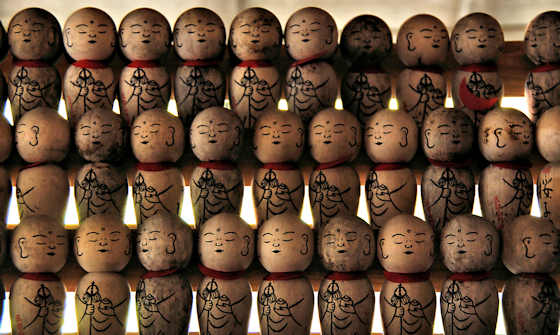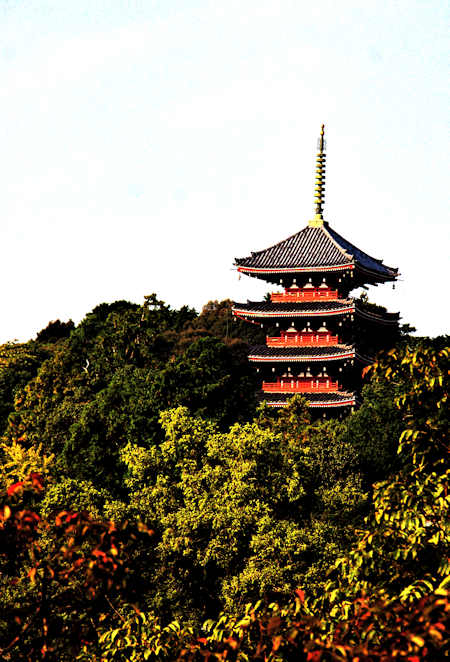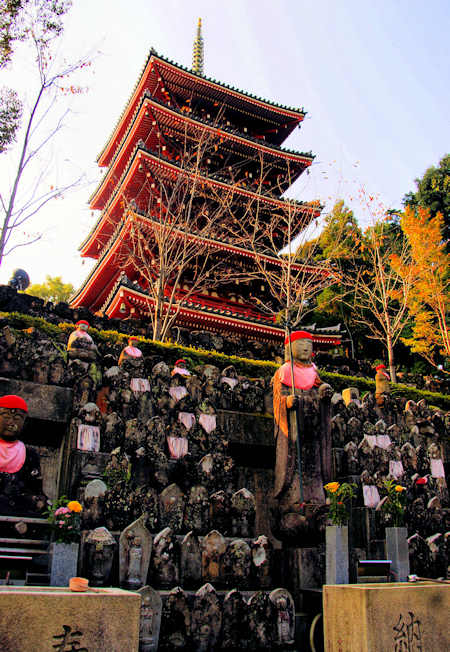At the end of my 11th day walking the Shikoku Pilgrimage I had crossed the border from Tokushima into Kochi and was about bto start the long stretch down the coast to the cape. Myotokuji Temple, lo9cally known as Toyo Daishi, is not one of the 88 temples of the pilgrimage, nor is it one of the twenty extra Bangai temples on the route, yet it is well known to walking pilgrims.
Between the temple and a nearby shrine is a small waterfall for practicing purification by cold water. There was evidence of recent use.
The temple had a kind of hand-made feel to it, with not a lot of money spent on it, but lots of effort. It felt more like a "working temple" rather than a tourist attraction. I was particularly taken by a small statue of the 7 Lucky Gods in their treasure boat that had a glass sphere that caught the setting sun.
I spent the night here in my first experience of a tsuyado, a place to stay for pilgrims provided free by a temple. The priest seemed to hesitate before giving me permission, and later asked if I wanted any food.
Before the sun was up loud drumming and chanting came from the small main hall as the priest began the days rituals.
















































